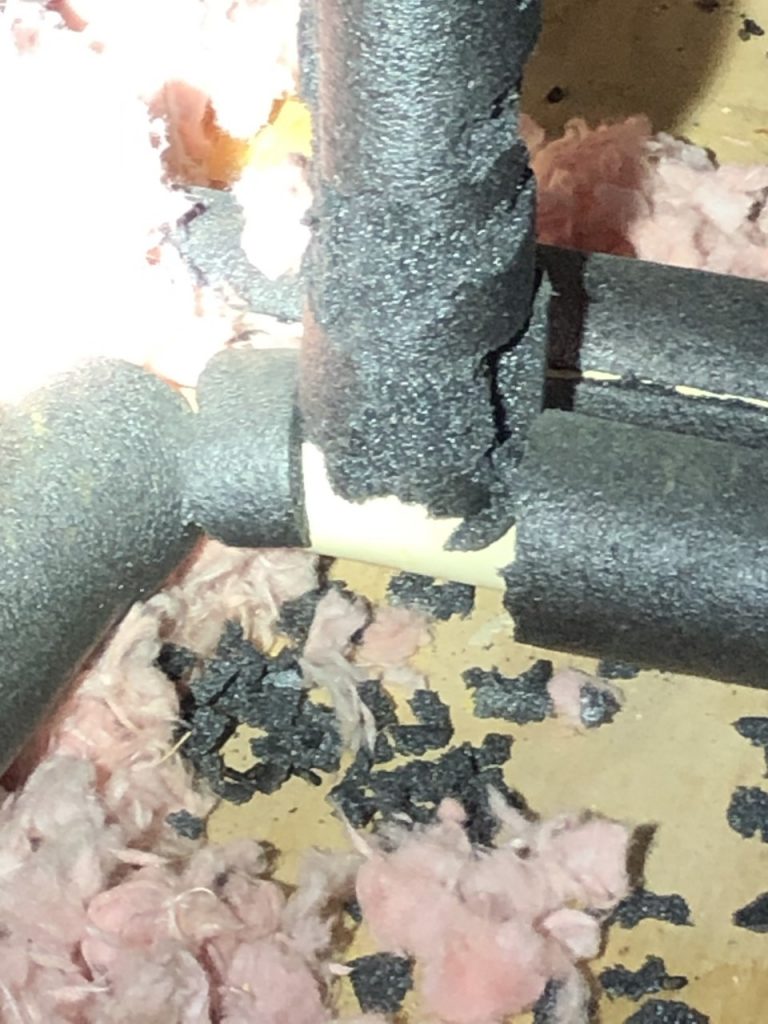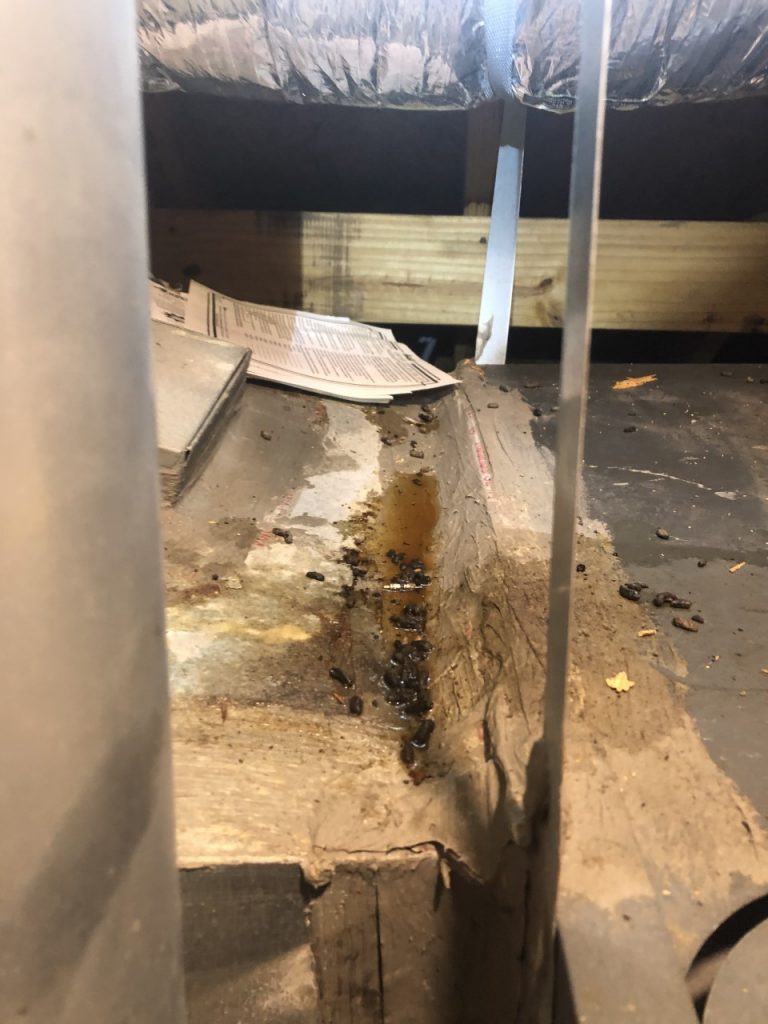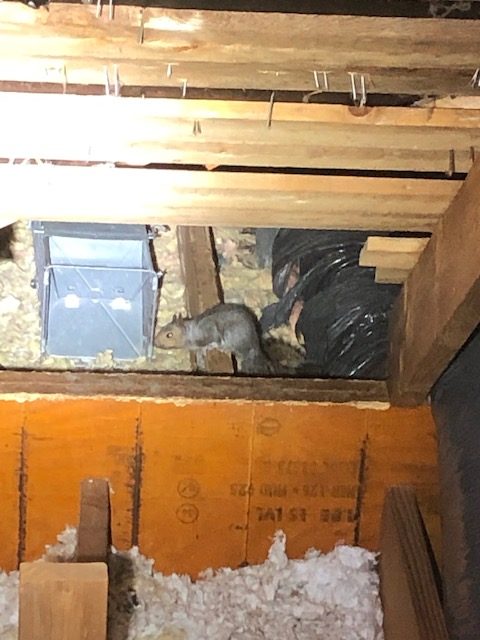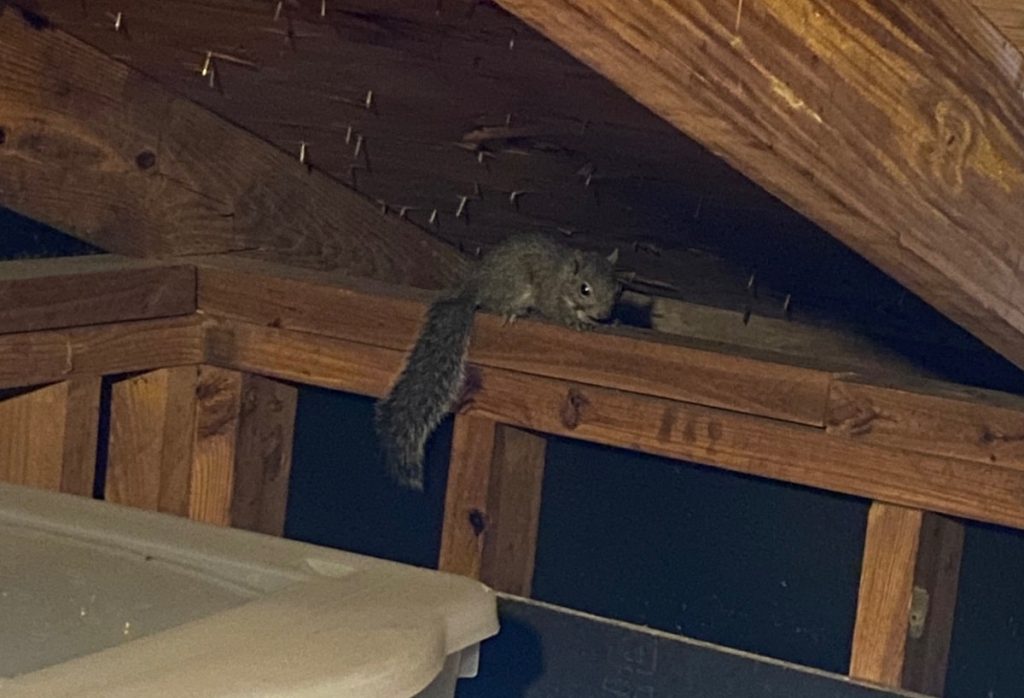One of the most popular places in your home for different types of animals to live in your attic, and none are more common than rodents in your attic.
Squirrels, mice, and rats are the most common rodents that live in attics.
- Norway Rat
- Roof Rat
- Eastern Gray Squirrel
- House Mouse
Signs of Rodents in the Attic
Attics are excellent nesting locations for many types of pests. They’re warm, unfrequented by humans, and safe from natural predators. All three rodent species share similar sounds, smells, and sights of an infestation.
Rodent in Attic Noises
All rodents can make squeaking noises, and their movements sound like scurrying through your attic space.
Rodent Attic Damage
It can be hard to see rodents in your attic, but you can see physical evidence of their activity. Rodent incisors never stop growing. Squirrels, mice, and rats will gnaw on any and everything in your attic.
Rodent Droppings in Attic
Rodent poop is small and can be dark brown to black in color. Mouse poop is about the size of a rice kernel, while rat droppings are black and bean-sized. Squirrel poop is about the size of a jellybean and looks like rat poop. It is rounder than that of a rat. It has more rounded tips with a slight bulge in the middle.


Rodents in Attic Problems
Though they’re all different pests, rodents in the attic cause similar issues. The defining feature of rodents is the constant gnawing. To keep their teeth at a practical length, mice, rats, and squirrels all have to gnaw constantly.
This leads them to damage support beams, stored items, HVAC, and wires. Frayed electrical wiring can cause shorts or even fires.
Rodents in the attic introduce health risks. All three of the common pests carry parasites in their fur. These pests easily move around homes and contribute to the spread of Lyme disease.
Urine and feces can be a host to health hazards. Some pathogens can infect you via airborne transmission. When rat droppings are disturbed, the airborne particles can cause hantavirus or histoplasmosis. Leptospirosis spreads when you come into contact with rat urine. You can catch rat-bite fever by coming in contact with surfaces contaminated with the bacteria.
If you find evidence of mice in the attic or rats in the attic, consider calling a professional. Rodent removal is only part of the solution.
How Do Rodents Get into an Attic
Rats, mice, and squirrels can squeeze through tiny holes. Mice can get through a hole the size of a pencil eraser. Mice can use the gaps around your utilities and vents. Norway Rats are also proficient swimmers capable of traveling through sewer lines and entering buildings by emerging from toilets and open drains. Squirrels will find entry holes in chimneys or construction gaps along the soffits.
If a rodent cannot find a big enough hole, it can gnaw through materials such as wood, vinyl, and aluminum to create an opening. Rodents can get in through loose shingles, fascia boards, gable vents, roof ridge vents, and plumbing stacks.
Check your roof and soffits for any small holes. Sealing up any kind of hole will cut the chances of a rodent invasion down.
Attic Rodent Removal
The first step is to trap and remove the current resident critters.
Generally, trapping is considered the most effective and safe way to control rats. The size of the infestation will determine how many traps, what types of traps, and what rat bait will be placed around your property. Typically, snap traps are the first choice. That’s because these traps can be used several times.
Rodent trapping usually takes between 5 to 14 days. But if you are dealing with a well-established colony, then the professionals might extend this timeline. With an especially large colony, other control measures including tamper-resistant bait stations may be required around the perimeter of your structure.
Due to the very cautious nature of these rodents, trapping won’t happen overnight. But with time, this is an effective way to remove any rats currently in your home.
Rodent in Attic Exclusion
Even if you successfully remove every rat in your home, other rats or mice will likely return. Your attic has already proven to be a suitable rodent habitat.
Long term rodent control prevents rodents like rats and mice from gaining access to the attic.
Trutech Wildlife Service prevents future rodent infestations. It is absolutely essential to seal all entry points of a quarter-inch or larger.
Rats, mice, and squirrels can gnaw through a variety of materials. It is important to use the correct exclusion device for the proper pest. The professionals will use sealants, wire mesh, hardware cloth, and other rodent-proofing structures to safeguard your home.
Rodent exclusion include:
Protect your vent with stainless steel mesh. This will prevent the rodents from getting into your vents. Cloth works well with bugs, but rodents can chew through it.
Install a vent guard on your roof. Caging the area around the vents on your roof will keep any curious critters away from your outside vents.
Long Term Rodent Control
The rodent removal steps above will give your home a much-needed reset. However, the pheromone trails left behind can lead to a new infestation of rats directly to your door.
The uncanny ability of rodents to find a happy home is a challenge for homeowners. But that doesn’t mean you’ll need to repeat the entire process again. Instead, regularly scheduled appointments can ensure that your home never sees another large-scale rat infestation.
A professional service that regularly monitors your home for rat problems can spot any future problems before things get out of hand. Although rats are incredibly resourceful critters, they are no match for a careful rodent control plan.
Professional Attic Remediation
Rodents will destroy your attic and make a mess of your home. After rodent trapping, full attic remediation and cleaning will be necessary.
Rodents destroy insulation. Squirrels and rats use insulation to build nests. Norway rats tunnel through it. Destroyed attic insulation can make your house less energy efficient. All rodents contaminate the insulation with urine and feces.
After a rodent infestation, you will need to restore or even replace your attic insulation. Trutech Wildlife Service offers attic remediation services which include insulation removal and re-insulation installation. We are equipped to measure existing attic insulation, remove and dispose of soiled or damaged insulation, and install new attic insulation.
DIY Rodent in Attic Control
Homeowners can make it harder for rodents to get into attics with the following simple prevention measures:
- Trimming tree branches that hang over roofs
- Installing gutter guards to stop climbing rodents
- Capping chimneys
- Replacing broken window screens
- Making sure vents are properly fitted




